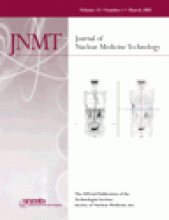
Beth Harkness
March is a dull and dreary month in the Midwest. You think it should be spring but winter hangs on in the worst possible way. It is too cold and rainy, or worse yet, snowy, for gardening and outdoor activities, but not cold enough for skiing and ice-skating. I personally like to use these “down” times to catch-up on things that I must do while inside. Reading and writing articles are among the things that I do at my house when the weather is gray and dreary. In particular, I try to catch up on reading continuing education (CE) articles so that I can maintain my certification with the American College of Radiology and the American Board of Radiology, the certifying organizations for medical physicists.
I have also always kept up my dues payments with the Nuclear Medicine Technology Certification Board (NMTCB). So, starting next year, I will be required to report continuing education credits to maintain that certification, too. In case you aren’t aware of the NMTCB’s new continuing education policy, the bottom line is that 12 CE hours are required each year, beginning January 1, 2006. This is not a huge number of hours. Physicians are regularly asked to acquire 50 hours per year. But the NMTCB’s new policy will require that you perform 1 or so CE activity each month or, if you prefer, bunch them up in a dreary month such as March.
Here is where the JNMT and the JNM can be of great assistance to you. Each issue of these journals contains at least 1 CE article. You can read the article and then take the test online to obtain your CE credit. (Just go to www.snm.org and click on the Education link in the left navigation column. Look for VOICE Credit Exams.) These articles are particularly good in that the authors are recognized experts in their field and each article has gone through the peer review process. That means that other physicians, scientists, or technologists have reviewed the article and approved the contents. The SNM then tracks your credits for you and provides a report at the end of the year. It could not be easier. You don’t even have to leave your house, which is a good thing considering the weather.
This issue of JNMT contains 2 CE articles, both of which are timely for technologists that wish to obtain knowledge beyond the basic skills level. The article by Tony Siebert is the second in a series on the fundamentals of x-ray imaging. His first article appeared in the September issue and was on the production and characteristics of x-rays. This article covers the interaction of x-rays and image quality. This series is particularly important for technologists that will be performing PET/CT or SPECT/CT exams and plan to sit for CT specialty certification. Our other CE article reviews the fundamentals of the Intersocietal Commission for the Accreditation of Nuclear Medicine Laboratories (ICANL) accreditation process. The number of institutions obtaining accreditation of their nuclear medicine departments is increasing each year. Understanding the basics of the ICANL process is important to all technologists.
Technologists that work in states that have licensure requirements that include a continuing education requirement have long recognized the value of the CE articles in the JNMT and JNM. As the rest of the technologist community is required to obtain CE credits, I think they, too, will be very glad that these 2 publications put a great amount of effort into providing high quality continuing education articles.
It has always been interesting to me that technologists, by far, outnumber physicians in taking the CE exams in both journals. I expect to see that number increase greatly over the next 3 years as the new CE requirements are implemented. We’ll be here for you.







